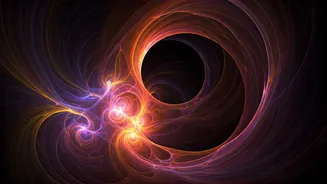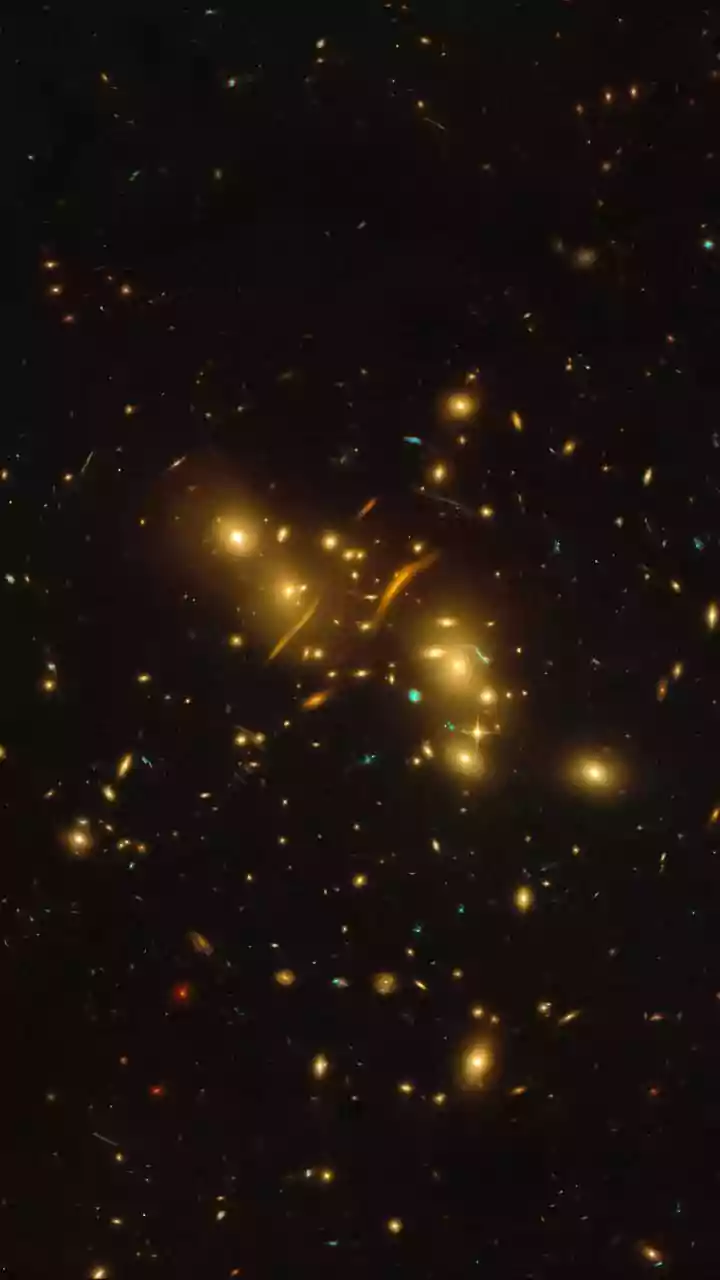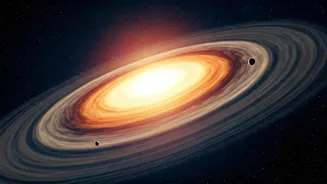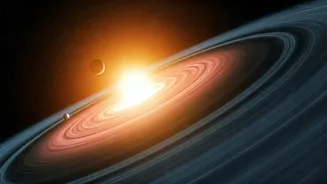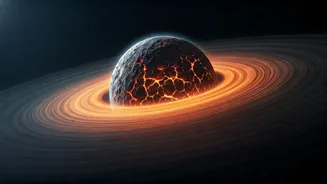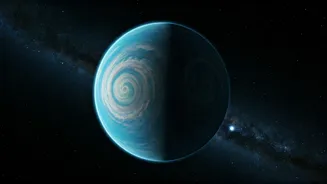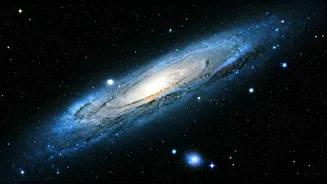Questioning Cosmic Pillars
The concepts of dark matter and dark energy have been pivotal in shaping our comprehension of the cosmos. Dark matter, undetectable yet inferred through
its gravitational effects, is believed to constitute a significant portion of the universe's mass. Dark energy, conversely, is proposed as the driving force behind the accelerated expansion of the universe. These concepts are foundational to the standard model of cosmology, influencing our understanding of galaxy formation, cosmic microwave background radiation, and the overall structure of the universe. However, as science advances, so does scrutiny. The new study challenges these pillars, suggesting that the observed cosmic behavior might be explained by alternative models, triggering a reevaluation of the underlying assumptions. This could lead to a significant paradigm shift in how we understand the universe.
Alternative Explanations Emerge
The research introduces alternative perspectives to the prevailing understanding of the universe. Instead of solely relying on dark matter and dark energy, the study proposes that the observed gravitational effects might be accounted for by modifications to the theory of gravity itself, particularly at large cosmic scales. This means that instead of invisible, exotic matter and energy, the very laws that govern how gravity operates could be different from what we presently believe. Furthermore, the accelerated expansion of the universe might be attributed to these modified gravitational laws, potentially eliminating the need for dark energy. These alternative explanations, if validated, would simplify the cosmological model, reducing the need for unknown components and enhancing its explanatory power. This leads to a more parsimonious view of the universe.
Implications and Future Research
The implications of this study are profound, potentially reshaping the landscape of astrophysics. If the findings withstand further scrutiny, it could mean that scientists have been misinterpreting certain phenomena for decades, leading to a need to revisit the foundational principles. This is not to say that the work is conclusive, though. The study serves as a catalyst for further investigation. Future research might focus on testing these alternative models against new observational data, such as from the James Webb Space Telescope, to determine their validity. This could involve searching for specific gravitational signatures that align with the modified gravity theories and examining other cosmological observations. The new work should encourage scientists to think outside the box and question existing models to pave the way for a deeper and richer understanding of the universe.
James Webb's Contributions
The James Webb Space Telescope (JWST) plays a crucial role in validating these theoretical advancements. JWST's high-resolution capabilities enable unprecedented observation of distant galaxies and cosmic phenomena. Its advanced instruments offer detailed views of the early universe, allowing researchers to gather data that can either support or refute these new alternative models. The telescope's observations, for instance, can help determine whether the distribution of galaxies and the behavior of light align with the predictions of the modified gravity theories, giving scientists more reliable data. In addition to that, the study of the cosmic microwave background can provide essential clues. JWST's capacity to delve deeper into the universe will undoubtedly provide new insights, furthering our understanding of the universe.
Re-evaluating Cosmological Models
This study underscores the dynamic nature of scientific exploration and the importance of challenging prevailing theories. Scientific understanding is not static; it evolves as new evidence emerges. The re-evaluation of cosmological models is a fundamental process that ensures that scientific theories remain accurate and reflect the most current state of knowledge. This instance highlights how new findings can challenge core assumptions, prompting researchers to seek new explanations that better capture the complexity of the universe. This ongoing process of questioning, researching, and adapting allows for continuous improvement and refinement of scientific understanding. The insights gained not only clarify existing mysteries but can also lead to more comprehensive models. This continuous re-evaluation ensures that our scientific understanding remains consistent with observational evidence.
